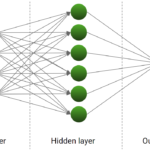
We’ve seen strong growth of Deep Learning techniques in the past few years. Thanks to technologies like Tensorflow and Keras, neural networks have become accessible by anybody in the world. But is Deep Learning really useful for you?
Possible uses of Deep Learning
Deep Learning makes use of neural networks, that are universal approximators. It means that a neural network can easily reproduce almost any kind of data it is trained on. That’s why Deep Learning can be used to accomplish several tasks that span across different topics. The main uses are computer vision and the analysis (and generation) of text. We could use Deep Learning even for tasks involving tabular data, just like any other machine learning model.
Advantages of Deep Learning
When it comes to analyzing images or sounds, Deep Learning is often the best choice. Although there are very interesting examples of text recognition performed with Support Vector Machines, there’s no traditional machine learning model that can give us the results of Deep Learning when we have to extract some information from an image.
The same thing applies to sound and text. When you don’t have tabular data, Deep Learning algorithms are very useful to analyze our problem.
Disadvantages
Deep Learning has a great drawback. Since neural networks are often complex and have several parameters and hyperparameters, in order to generalize efficiently we need large datasets. If our dataset is small, we seriously run the risk of overfitting due to the universal approximation capability of neural networks.
So, neural networks and Deep Learning must always be trained properly on a large enough dataset. Moreover, tuning the hyperparameters of a neural network is very complex and time-consuming. You’ll often see projects with feedforward neural networks with several hidden layers and a high number of neurons, but often these architectures have not been optimized in advance, so this complexity may not be really useful for the project.
Finally, although there are techniques that allow us to explain the results of a neural network, these models are always black-boxes that hide the information by encoding it into a complex topology and it’s not easy to extract it.
Do companies need it?
It depends on the business of the company. If your company works with images, computer vision or sound analysis, you definitely want to master Deep Learning. But if your company doesn’t work with such kind of data and always finds itself working with tabular datasets, you don’t need Deep Learning. Do yourself a favor and don’t apply neural networks on tabular data. There are a lot of machine learning models that can be used instead of neural networks (I talk about them in my Supervised Machine Learning online course) and they are more powerful even with small datasets.
So, my answer is: no, companies that work with tabular data don’t need Deep Learning. Moreover, they should be suspicious about anybody who wants to use neural networks with tabular data (unless other models have failed and a proper Exploratory Data Analysis has shown that a predictive power actually exists inside the dataset).
My idea is that Deep Learning is overestimated and too much preferred to a healthy data analysis and machine learning process. Some data scientists think that using neural networks allows them to bypass pre-processing, feature selection and EDA. this is completely wrong and dangerous since neural networks are some of the most demanding models when it comes to pre-processing data.
The biggest damage has been made by some managers, who think that Deep Learning is the only kind of machine learning that is worth paying for. Actually, models are not the most important part of Data Science and it’s still difficult to teach this topic to managers.
Conclusion
Deep Learning is a great innovation of our century, just like Artificial Intelligence in a wider scope. It can be used to analyze non-tabular data like images, sounds and texts, but not all companies work with such datasets, so not all companies really need to use Deep Learning. If you work with tabular data coming for example, from a Data Warehouse, then you should definitely avoid Deep Learning.




